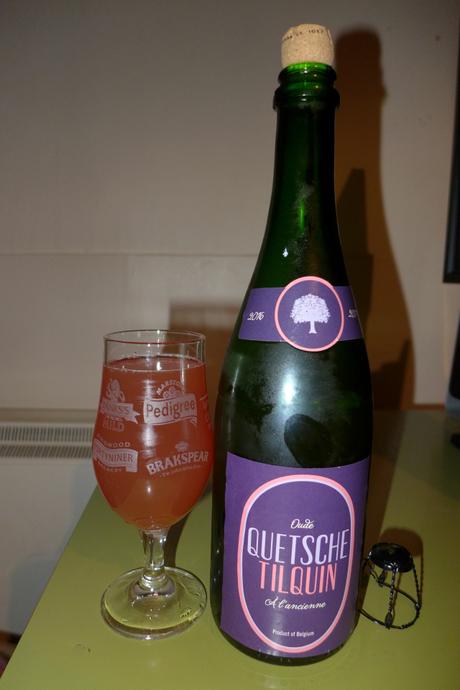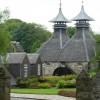
Tilquin : Oude Quetsche Tilquin a L’ancienne (Belgium: Fruit Lambic: 6.4% ABV)
Visual: Cloudy ruddy red to dried apricot. Small white bubbled rim for a head.
Nose: Black-cherry. Floral. Vanilla. Plums. Cherry blossoms. Dried apricot. Lightly tart apples. Horse blankets.
Body: Light mouthfeel. Brown bread. Tart apples. Moderate acidic character. Dried apricot. Strawberry. Sour plums. Dry Madeira. Light tayberry. Tannins. Lemon. Marzipan. Dry spice.
Finish: Tart apples. Dried apricot. Charred oak. Prunes. Lots of tannins. Dry sherry. Dried raisins. Plums. Acidic dryness. White wine. Raspberry. Strawberry.
Conclusion: I often find it odd how fruit lambics – while usually fruity as hell – often don’t taste massively of the fruit used to make them, instead emphasising what to seems to be a random other range of notes.
This, for example, is made with plums. It does have some plum notes, but more than that it gets interactions with the lambic to have it come across more as dry raisins and dry sherry like notes.
More normal is the base, with acidic apple and lemon notes working in a tart and moderately acidic base – not super mellow, not super sweet, dry or harsh. It feels very manageable, but still a distinctly tart lambic. It emphasises more a large amount of tannins, especially late on, giving a good amount of weight and grounded character to the body behind the freshness.
What is most unusual to encounter is the middle ground between the dark fruit and the fresh lambic – this is where the largest range of fruitiness comes out. They both merge to bring out very fresh raspberry to tayberry notes, some fresh strawberries and grounded dried apricot. This is what I tend to call the almost holographic flavours brought on by the mix of the base flavours and the acidity, and make up the front half of the beer; The initial impressions before the darker fruit of raisins and plums come in, which initially are in the latter half to the finish of the beer. Over time though the darker fruit rises, and come to take center stage from sipping onwards as the flavours build up – closer to what you would expect from the chosen fruit.
I can see from this why plum isn’t the most commonly used fruit, not up there with cherry and raspberry, but it still does pretty darn well for itself. The base lambic is pretty darn good, and the plums take it to darker dry fruit notes in an unusual fashion – generally darker fruit I have seen used go in a sweeter direction. This feels closer to red wine sour influences, though you do get sweet almonds to marzipan late on to add a touch of sweetness to it.
This is almost a sherry lambic to my mind, with the dark fruit getting more notable the longer you spend with it. Definitely earns its spot as something different in the lambic league.
Background: This is the 2016/2017 batch of the beer – a lambic made with one and two year lambics, fresh plums and refermented in the bottle for three months. So, an unusual fruit choice which made me really want to try it. Grabbed from Independent Spirit, this was a big beer, so I put on some Frank Carter and the Rattlesnakes – heavy duty punk yo go with it.
Advertisements
